Driving in Russia
Driving in Russia can be an alternative for adventurous people who want to see the countryside or travel in their own pace around the biggest country in the world. Nevertheless, in much of Russia driving conditions are remarkably different from western countries.
Understand
If you're not used to local road conditions and driving culture and don't understand Russian, independent car travel can be challenging and even dangerous. Roads may be poorly marked, if marked at all, and poorly maintained, especially outside the cities and towns. Road numbers are not well marked, and direction signs are normally in Russian only (in the western part of Russia they are sometimes also in Latin script).
Roads
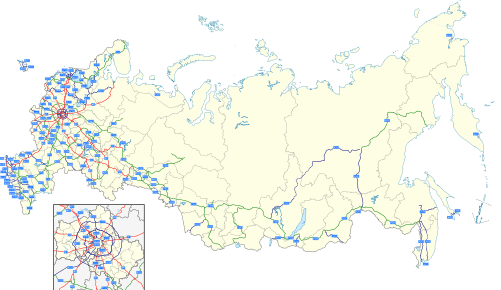
The most important roads in Russia are designated federal highways; these include major roads raying out from Moscow (designated with 'М') and roads that are part of the European or Asian international road networks. In addition many roads between administrative centers (designated 'Р', Cyrillic for 'R' ) and other important access roads (designated 'А'). These form the major skeleton of the Russian road network, are the best maintained and usually paved — though particularly in the east of Russia, some (for example the Kolyma Highway) are still gravel roads or include gravel sections. The roads making up the Trans-Siberian Highway were completely paved only in 2015.
Highways in the countryside usually consist of two lanes with no barrier between them, though in major cities highways have more of them — the MKAD beltway of Moscow has ten.
Bring
These are things you should bring if driving your own car to Russia:
Documents
- driving license
- international driving license isn't mandatory but strongly recommended
- vehicle registration documents, and if you're not marked as the owner the car, you also need a letter of attorney
- "green card" vehicle insurance supplement
- two customs declaration forms — available at the border but to save time you can also print and fill them beforehand
- phone numbers for emergencies
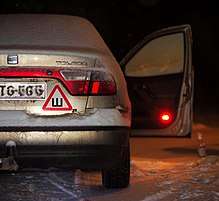
- in the winter, if your car is equipped with studded tires, a warning sticker with a 'ш' in a red triangle warning people driving behind you that you're able to stop quicker than they if the road is slippery. This sticker can be bought for example at some Finnish gas stations near the border.
- reportedly also a separate sticker stating the nationality of your vehicle (the blue mark on the left on number plates from EU countries and most other European countries is reportedly not enough)
Gear
- fire extinguisher
- first-aid kit
- warning triangle
Can be useful
- spare tire and tools for changing flat tires. If your wheel is damaged, it's often hard to find a new one; locals usually have them repaired at a wheel shop.
- towing rope
- fuel can
- tools
- spare car keys
- shovel
- jump cables
- for longer trips, spare parts
As with all longer car trips, service your car before the trip to make sure it's in good condition. Also, remove unnecessary stuff that you won't need on the trip.
Get in
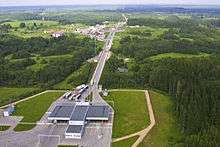
In addition, see Russia#Get in for visa procedures.
It's recommended having an international driving license; this is a supplement to your regular driving license and usually available from your the automobile club in your home country.
Vehicle insurance
A green card is mandatory, this a supplement to your vehicle insurance that you can obtain from your insurance company. Formerly you had to buy a separate insurance from a Russian insurance company for your car at the border.
If an accident happens, you must inform the traffic police (GIBDD (ГИБДД), former GAI) and get a copy of the police report. The police report is necessary when dealing with your or the other part's insurance company (in other words both if you caused the traffic accident or if you're a victim).
Customs declaration form
At the border, you need to fill in two pieces of customs declaration forms (Таможенная декларация). One you will leave with the customs agents, the other is stamped and given back to you and you will hand it in at the border when leaving Russia. When entering you will also be given a separate permit for temporary vehicle importation, that you will likewise hand in upon departure. Don't lose these documents!
Traffic rules
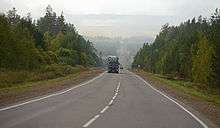
In built up areas the speed limit is 60 km/h, on highways 90 km/h and controlled-access highways 110 km/h. Cars driving 120 km/h on highways are not an uncommon sight, though road conditions do not always allow for high speeds. Driving on unpaved roads with a normal car is possible, though it's good to have a 4WD.
Traffic behavior in Russia is unpredictable, for the uninitiated outright dangerous. Sometimes Russian drivers respect and take into consideration other drivers and other traffic, yield and know how to drive, but all to often they don't. Expect to encounter speeding, dangerous overtakings and cars that are in a dangerously bad condition. High speeds are not uncommon in urban areas either. Moreover, highways were built for a much smaller number of cars than there are now, which means busy traffic. Headlights are often used only at dark, and in the worst case not even then. Road fatalties per 100,000 inhabitants is 18.9; twice that of the USA, four times of Germany and France and comparable to China, and some Middle Eastern and Latin American countries.
That said, if you have your wits about you and use common sense you'll likely be fine. Especially from neighboring countries it's not uncommon for people driving into Russia without incidents and of course Russians themselves use the roads for getting around.
Highway driving
Drive carefully and pay attention to traffic more than at home. Big temperature differences throughout the year, heavy traffic and many kilometers of road to maintain with limited funds results in cracks, ruts, potholes being common even on major highways, therefore allow for enough time when driving between cities.
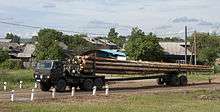
When it looks like someone wants to overtake you, move to the right of the road, slow down and blink to the right once to signal that it's OK to proceed. As highways are wide, overtaking when there's oncoming traffic isn't uncommon on two-lane highways. Also, drivers commonly dodge the aforementioned cracks and potholes by crossing over to the other lane — this is why you may see oncoming cars moving into your lane, without any apparent reason. If you can do it safely, you can do so as well. Another danger is logging trucks transporting whole trees (not cut into trailer-length pieces, like in e.g. the Nordic countries) and as such will take up the whole road in curves.
Curves may be tilting towards the outer edge, so if the road is slippery you may want to cross over to the other lane to drive through the curve on the inner side. In the winter roads are in general plowed, sanded and salted, though some road maintenance departments don't have enough equipment.
If you need to ask for directions, and there's little traffic, you can flash your headlights at the oncoming cars and slow down in the middle of the road. Usually the oncoming car will stop. If an oncoming car is flashing their headlights at you but not slowing down, they're usually telling you that the traffic police has set up a speed trap or checkpoint in your driving direction. They mostly do this at entrances to towns and villages. If you're stopped by the traffic police, unless you've been driving too fast or commited some other traffic offense, they usually only ask to see your driving license and vehicle registration document.
The drink driving limit in Russia is 0.3‰, lower than in most European countries; it used to be 0‰. That said, you might still encounter drivers under influence of alcohol.
Not all highways in Russia are free: on some highways, toll gates block the way, so the traveller may need RUB20-60 per toll (may be paid by a credit card).
City driving

Lanes aren't always marked in the cities, though local drivers are used to this and will keep a sideways distance as if there were marked lanes.
In roundabouts the yielding rules are not always respected, and while you (just as in e.g. Europe) should blink to the right to indicate you're exiting the roundabout, in Russia you should also have your blinker on to the left when driving inside the roundabout.
Respect the traffic lights. They usually change very quickly, and the cars in the other direction will get moving instantly when they get a green light, whether or not there are still other cars in the intersection.
Pedestrians often boldly walk across zebra crossings even if there are oncoming cars. On the other hand, cars do not respect pedestrians as much as you would expect, and if you've stopped before a crossing to let a pedestrian cross, don't be surprised to see that the car on the other lane will just drive through the crossing without even slowing down.
Authorities
Most federal highways (marked as M-1, M-2 and so on) are surveilled by automated systems, but minor roads are patrolled by the traffic police, officially known as the State Auto Inspection (GIBDD). GIBDD roadblocks are inside every federal district border (about every 200 km). It's very useful to have a detector for radar speed traps and a dashcam video recorder. A video record is your ultimate defence in all problem cases with GIBDD. Russian courts accept dashcam videos as evidence.
If you're involved in a collision as the driver, the main rule is not to move your car and don't leave the scene of the accident until a GIBDD inspector draws an accident plan and you sign it. Any violation of this rule may cost you 15 days of freedom. All other questions should be directed to your insurance company.
Traffic police asking for bribes is not as common as it once used to be, but it reportedly still occurs and is more common the further east you travel. You may also encounter fake police officers asking for bribes.
There are 3 kinds of police in Russia: traffic police, patrol police, and security police (вневедомственная охрана). Only traffic police have the right to issue you traffic tickets, and you can distinguish a GIBDD car from a regular one by looking at the lightbar. GIBDD cars have red and blue lightbars, while the rest of the police and the emergency services in general use blue. Traffic police vehicles also have "ДПС" (DPS) written on the hood and trunk of them, which stands for "Дорожно-патрульная служба" (Traffic police service).
Fuel
Fuel prices are at around €0.60/liter for both gasoline and diesel comparable to the USA, and considerably lower than in Europe in general.
When far out in the countryside, it can be hard to find unleaded fuel, and there the quality may be bad. Hence, try to use branded fuel stations only. Diesel is available everywhere, but it too may be of low quality which means it could clog your fuel filter.
Parking
When parking, don't leave valuables visible. When parking overnight, it's good to use guarded parking lots, just to be on the safe side. You can often find those at hotels or near hotels. Another alternative is asking locals if you could park your car on their yard overnight.
There are also official camping areas along the highways, and wilderness camping is allowed pretty much everywhere. If you camp near settlements, you should out of courtesy ask locals if it's OK to camp there. There are no regulations against making campfires, though you should of course exercise common sense and abstain from doing this if the terrain is dry.